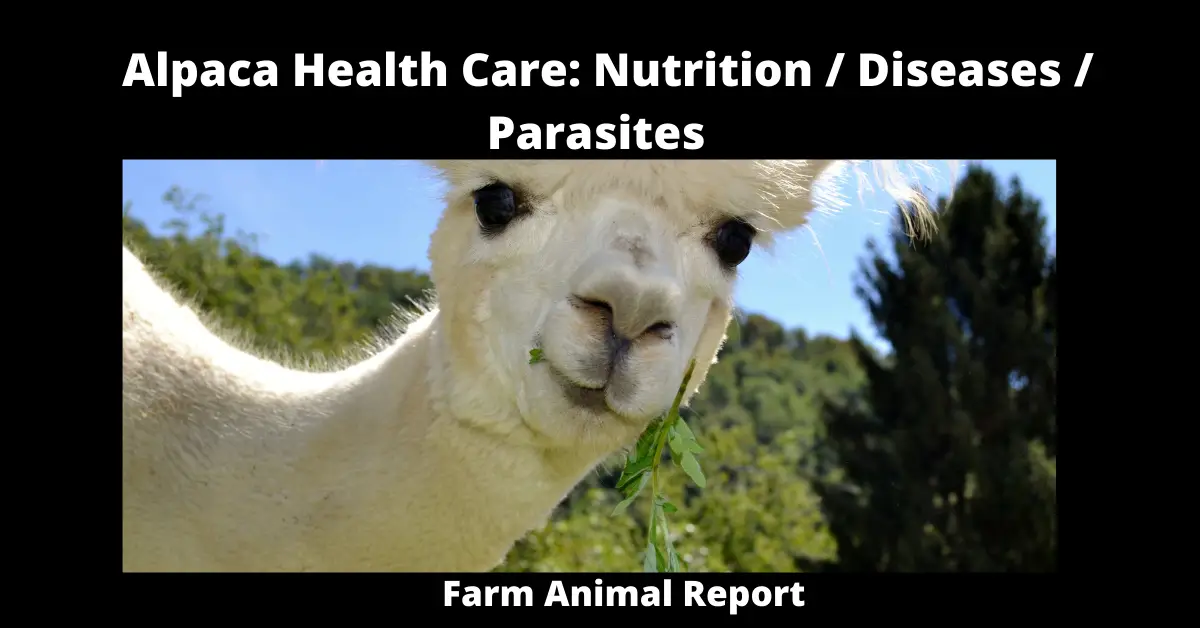As a general rule – Alpacas are a type of animal that originated in South America. They are often kept as pets and for their wool, but they can also be used for meat or fiber production. If you’re considering buying an alpaca, it’s important to know about the different types of care that they require. This blog post will go over some basic tips so that you don’t end up with sick or unhealthy animals!
Alpaca Health Care
Alpaca Care – Alpacas are members of the camelid family. These creatures are markedly different from their counterparts or other species. The care requirements for each individual are distinct. All types of habitats, from ranches with huge open ranges to small suburban holdings, as well as practically every sort of climate and geology, are suitable for alpacas.
Some Alpacas live on dry lots and rely solely on the nutrition provided by their owners, whereas others live on pastureland with plenty of room to go around. These animals flourish in a setting where their interactions with people and other animals are pleasant, basic security is provided, and they may participate in appropriate activities for their natural environment. Alpacas can live for 16 to 20 years or more on average.
This article will cover approaches based on the most current scientific understanding and the expertise of members of the alpaca community in animal husbandry. It is designed to serve as a framework for suggested camelid care instruction and, as such, to serve as a foundation for continuity and consistency in camelid care practices.
Alpaca Nutrition
- Ensure that Alpacas have access to drinkable water constantly. If you are in a hot environment, water that is cool to the touch will encourage you to drink more and prevent dehydration. When it’s incredibly chilly, lukewarm water will do the trick.
- Ensure that animals have daily access to high-quality, mold-free hay and nutrient-dense pasture. Adult maintenance feed should generally comprise 10-12 percent crude protein on a dry matter basis, with 1.5 percent – 3 percent of body weight is supplied as supplemental protein. Growing children and pregnant or nursing Alpacas late in their pregnancy or early lactation may require 12-16 percent crude protein on a dry matter basis. This can be accomplished by feeding forage with higher protein content and supplementing with a high-protein diet. For subtle reasons, llamas require lower protein levels than alpacas, whereas the latter requires higher protein levels. Individual animals, on the other hand, may need more or less nourishment. Body Condition Scoring (BCS) should be used to consult with a veterinarian or an animal nutritionist to identify individual requirements.
- Provide free-choice access to minerals appropriate for the species and the region if they are not already combined into a supplemental feed that is being supplied.
- To reduce human connection, feed a baby that requires human assistance with a feeding tube or bottle regimen that is as close to natural as possible. To maintain proper behavioral development, humans should only provide supplemental feeding when medically necessary. The cria should remain with its mother and the herd for the duration of its life. Animal-human bonding that is not acceptable might result in severe behavioral disorders.
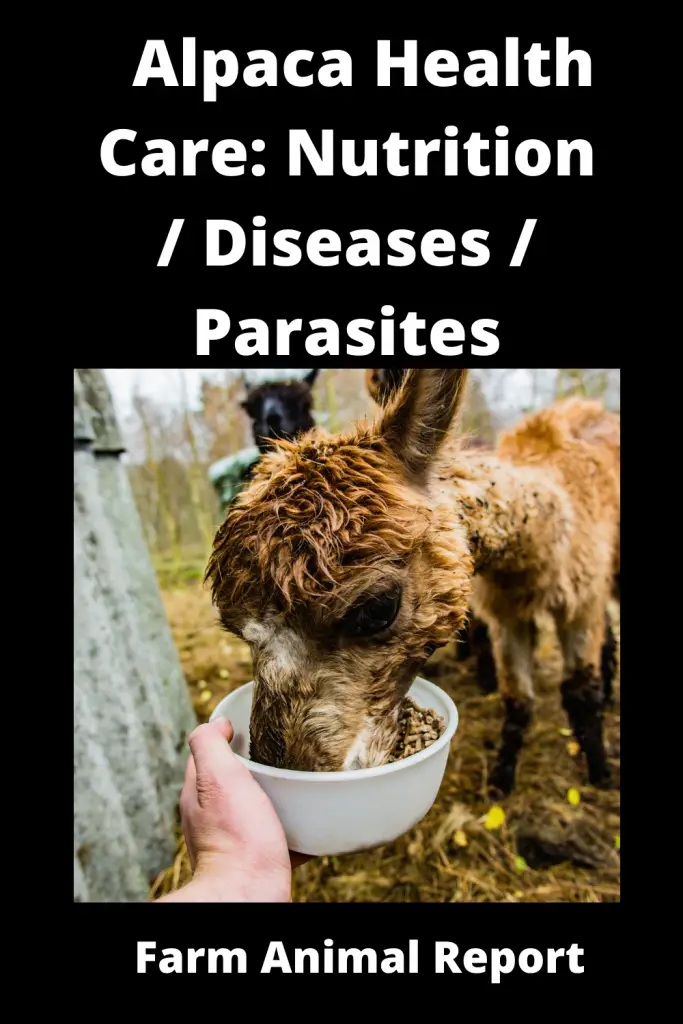
18 ways Alpaca Farmers make Money
What Supplements do Alpacas need?
Alpacas thrive at a calcium: phosphorus ratio of 1:2 to 2:1, which is often recommended. Because an excess of one or a deficit in one can result in significant health issues such as bone loss or development retardation, the ratio must be provided with care. The absorption of these minerals is aided by the presence of vitamin D. Another thing to keep in mind is that alfalfa hay is typically much higher in calcium than grass hays, sometimes up to 4-6 times more.
That could be a 6:1 ratio, for example. Alpacas have a 2:1 bone to tooth ratio, which means they have more teeth than bones. If you must maintain a ration between 1:2 and 2:1 for a healthy alpaca resident, follow these guidelines:
A vital trace mineral, Copper, must be carefully monitored in alpacas since they have limited tolerance for Copper and can die from extreme Copper toxicity. They can also have health problems if they are deficient in Copper, so it is so crucial to monitor their intake. In most cases, the toxicity is caused by an improper ratio of Copper to a mineral known as Molybdenum. Alpacas’ availability of Copper may be affected by zinc, sulfur, and iron in their environment.
Selenium is also crucial, and the levels of selenium in the soil at your sanctuary should be measured to ensure that no one suffers from Selenium depletion. Consult your veterinarian about these and other mineral requirements, such as Magnesium and Potassium, to ensure correct supplementation. Mineral deficiency and excess quantities of minerals can result in significant health problems and even death in pets.
Vitamins, in addition to the minerals mentioned above (and others), are essential for maintaining healthy health. Vitamins A, B, D, and E are all critical for maintaining the health and happiness of your alpaca residents. As an example, a deficit in Vitamin A can result in stunted growth and decreased resistance to infection, among other effects. Vitamin D insufficiency can result in bone problems, such as rickets, in children. A vitamin E deficit can cause problems with the eyes, skin, and liver. The B vitamins (B1, B3, B2, and B12) all perform a similar role in a healthy body, with each vitamin being vital for a different component of bodily health than the others.
You should never give supplements to your Alpaca without first determining the amounts of these nutrients present in their diet without speaking with your veterinarian!
What should Alpacas not Eat?
Do not feed Alpacas the following:
- Lima beans
- Avocado
- Chocolate
- Animal products of any kind
- Cherries or other stone fruits
- Peas
- Brassica Potatoes, tomatoes, eggplant
- Sugary human food
While this is not a full list, it will undoubtedly assist you in keeping your resident alpacas safe, healthy, and happy!
Do Alpacas need a Salt Lick?
No alpacas do not need a salt lick usually if you are giving loose salt in their diet, but they require salt lick if you are not giving loose salt in their diet. Remember, they do not like to lick often, so loose salt is the best option.
Do Alpacas need Mineral Blocks?
Unless they are specifically created for alpacas, mineral salt blocks and loose mineral mixtures should not be given access to alpacas unless they are free of Copper, such as those formulated for sheep. Minerals and salt should be kept in a small feed pan or bucket in a dry area.
Physical Environment Requirement for Alpacas
- Establish a natural or artificial shelter with adequate ventilation and space to allow each Alpaca to find relief from adverse environmental circumstances (for ex., excessive cold or heat; high humidity; precipitation; wind chill; saturated ground/standing water during periods of rainy weather)
- When temperatures approach extremes, whether at home or when traveling, make sure you have a heating source or cooling measures in place. Heat stress (hyperthermia) and hypothermia are both life-threatening medical disorders that must be treated immediately.
- Manure should be disposed of regularly in enclosed spaces, mud should be avoided, and any urine build-up should be treated to prevent parasite infestations and disease.
- Construct fencing that is high enough and strong enough to keep alpacas safely contained in designated pastures. To avoid animals from being entangled in fencing, the design should be simple. It is not suggested to use barbed wire.
- Keep just the number of animals per enclosure that allows each animal to walk freely and independently while not in the company of a human and the capacity to exercise daily. Llamas demand a larger amount of space than alpacas, and their needs are often higher. In addition to physical location and conditions (e.g., topography, vegetation, availability of pasture, etc.), herd composition (i.e., the proportion of males, weanlings, females, and so on) will determine the suitable number of animals that can be housed within a specific space. Also, be aware of the zoning regulations in your area.
- Alpacas are herbivorous animals that browse and graze. Provide them with the opportunity to browse and feed/graze daily, if at all possible.
- Alpacas may be housed in small places for a brief amount of time in transitory conditions such as at shows or in the case of health difficulties. When animals are kept for longer periods of time (e.g., when they are in quarantine), they should be exercised daily.
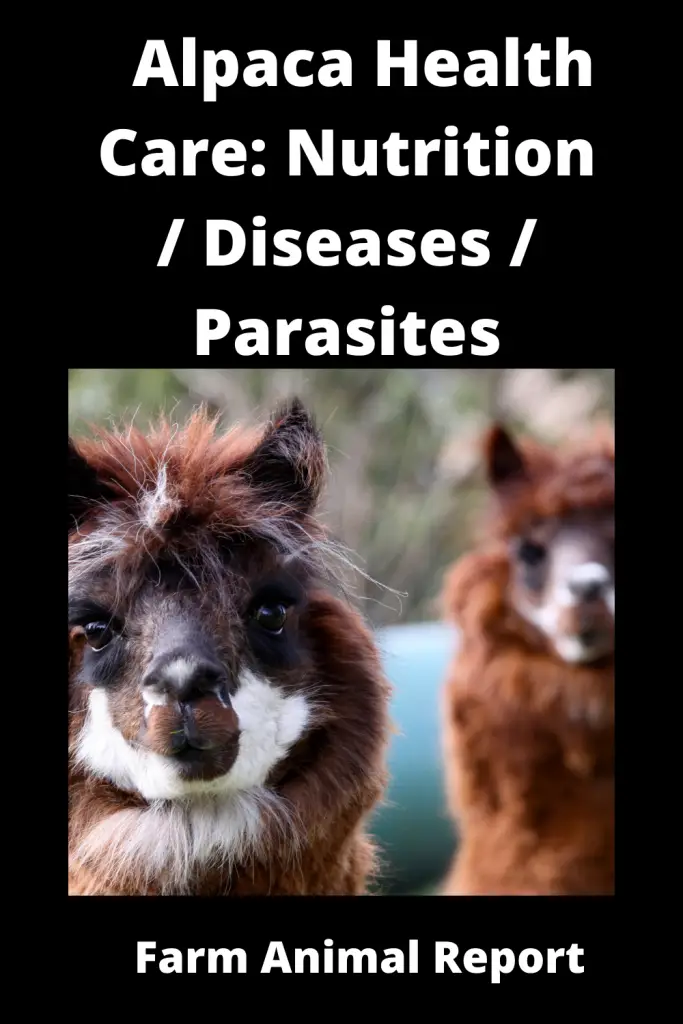
Alpaca Husbandry
- In order to keep parasite infection and disease under control, de-worm and vaccinate as needed in your area. Seek advice from those who are well-versed in the area. P. tenuis, a type of meningeal worm, has been found in specific geographic areas, and it has the potential to inflict fatal damage to alpacas. Seek veterinary advice if you want to take any preventative measures.
- The physical evaluation of each animal should be done regularly, at least twice a year, by a trained professional. Weighing and body score (as shown in Fig. A), mucous membrane color check (inner eyelid or gums), condition of incisors, and examination of the fiber coat should all be part of the procedure. It is necessary to conduct a complete health examination, including fecal analysis, veterinary exam, and blood analysis, when there is weight loss, body score alterations, pale color, listlessness, or clumped stool in stool. Increased weight gain should trigger a reconsideration of one’s nutrition and physical activity habits.
- Trim toenails if they are growing too long and causing lameness or compromising soundness.
- Most alpacas have their fleece sheered every year warm to hot areas, with high humidity being particularly prevalent.
- Geld non-breeder males should not be used for breeding until they are at least 12 months old, with 18-24 months ideal. The majority of geldings can be securely confined with males or females when a sufficient amount of time has passed following gelding to ensure that they are no longer fertile. (To be on the safe side, give it around two months).
- Animals with genetic problems should not be bred or placed in situations where they could reproduce.
Give prompt veterinarian attention to an alpaca that appears to be sick or injured, including dental care if the animal’s ability to correctly process food has been impacted.
Do Alpacas Get Sick?
Yes, they can get sick by many diseases and infections. Environmental conditions also affect their health.
Wearing gloves when conducting health examinations is extremely necessary because they are frequently infected with zoonotic diseases.
Can Alpacas get Johne’s Disease?
Johne’s disease (JD) is a bacterial infection of the lower intestine tract of ruminant animals that is chronic and incurable. It affects both humans and animals. Although it is most frequently associated with cattle, sheep, and goats, it can infect any ruminant, including deer, elk, bison, llamas, and alpacas, as well as humans. The condition is also known as paratuberculosis.
What Parasites can Alpacas get? Or Do Alpacas get Roundworms?
In addition to the barber’s pole worm (Haemonchus spp. ), roundworms, and scour worms, alpacas are susceptible to many gastro-intestinal parasites or “worms” that infect sheep and cattle, including the barber’s pole worm.
Camelids are also very susceptible to liver fluke, and Fasciola hepatica, affecting humans and other animals. It is the only liver fluke that has been discovered in Australia, and it can cause diminished productivity as well as death.
Australian alpacas are infested mainly by the camelid chewing louse, Bovicola breviceps, which is the most common ectoparasite found in the country. These lice are disseminated by livestock exhibits, mobile matings, and shearing equipment.
Do Alpacas need Worming?
Yes, alpacas require a vaccination and worming regimen that is pretty similar to that of sheep. Vaccination against Clostridial disease and worming is needed twice a year for alpacas in the spring and autumn. Winter months necessitate the administration of a vitamin D injectable every one to two months.
How do I know if my Alpaca has Worms?
Lameness, incoordination, trouble rising, paraplegia, paralysis, circling, and blindness are among the clinical manifestations reported in worm-affected alpacas, among other things. Clinical indications begin to manifest 45-53 days after the infection.
How do you Treat Worms in Alpacas?
Antihelmintic medications can be given to alpacas to cure worms that they have acquired. Ivermectin has been the most effective anthelmintic for preventing meningeal worm infection (1.6 to 2 cc of 1 percent ivermectin per 100 pounds body weight, injected under the skin, every four weeks).
Handling Alpacas in a Safe Manner
- Adjust alpaca halters such that the nosepiece allows for chewing while without sliding down against the soft cartilage of the nose and preventing breathing. The noseband should be held in place by the crown piece, which should be snug. Because camelids, unlike some other animals, must breathe via their noses, improperly fitted halters can be lethal to them.
- Because alpacas are frequently traveled, teach them how to be halter trained, led, and loaded into a transport vehicle, will reduce stress and make transportation activities easier to manage.
- It is recommended that you should not wrap a lead rope around your hands or torso to prevent significant harm in the event that an alpaca takes off quickly.
- Use particular caution when transporting alpacas in extreme weather conditions, whether hot or cold, such as snow or ice. In addition to ensuring that the transport vehicle is adequately ventilated, it is critical to monitor for indicators of heat stress (flared nostrils, lethargy) and hypothermia (shivering) at regular intervals, both while in motion and while parked.
- Leave alpacas unfastened for the duration of the transportation process. Alpacas that are tied during transit are at risk of severe injury or death. It may be necessary to tie animals for their safety in rare instances, such as transporting them in a vehicle they could jump out (not recommended).
- Do not let alpacas alone in a livestock chute unless they are being watched.
- Before packing with alpacas, spend some time learning about the saddle system that will be used, how to fasten it without causing injuries, and how to balance and pack it with the proper amount of weight for the specific Alpaca. If an alpaca is less than two years old, do not fully load it until it is well-trained, well-conditioned, and near physical maturity, which is usually reached at four years of age or older.
- For direct interaction with the public, only alpacas that interact appropriately with people should be chosen for utilization. Props and surroundings should be safe for both the animal and the handler, and public members.
Spitting is a highly sophisticated body language used by camelids to convey discontent, establish and maintain social order in the herd, and respond to a significant threat in their environment. Camelids that are accustomed to pleasant interaction with humans are less likely to spit at humans in general.
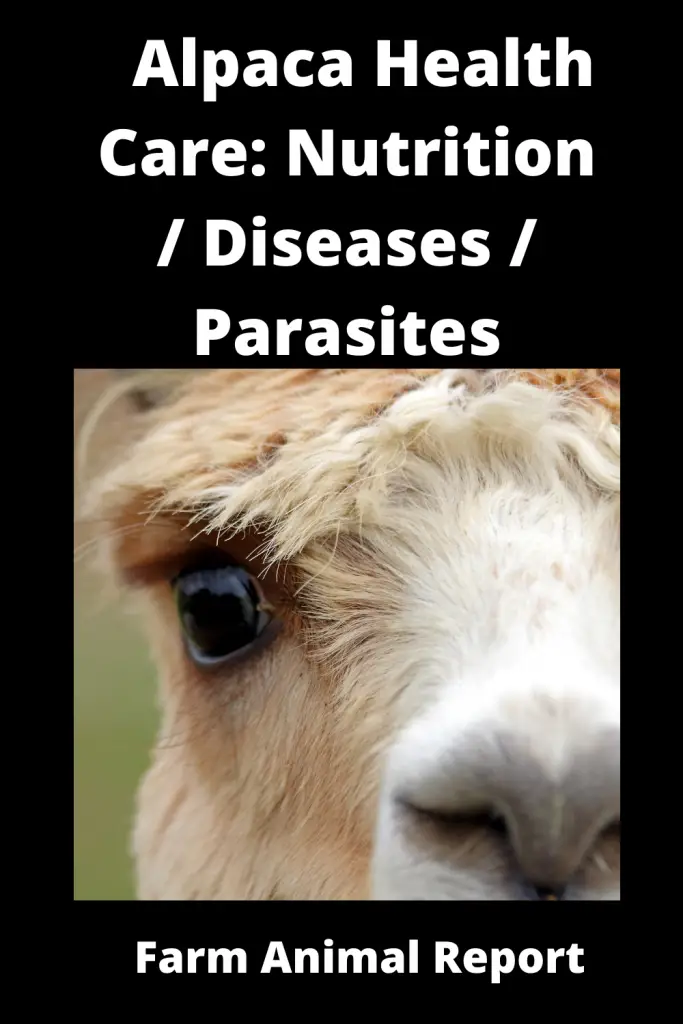
Safekeeping
- Never leave alpaca halters on unattended alpacas while releasing them into their natural habitat.
- Animals taught for tethered grazing can usually be left unsupervised for short periods of time, such as while on a pack trip, but they should not be kept staked out for an extended amount of time.
- If intact males are maintained together, they should be separated into groups based on their age, size, and demeanor. Their behavior should be closely observed to ensure that they do not engage in excessive fighting. When fighting or intimidation puts any individual alpaca at risk of hunger or severe damage, it is necessary to separate the herd.
- At the very least, once a year, examine the “fighting” teeth of males in group housing and trim them as essential to prevent injury to one another.
- Provide various feeding stations to guarantee that all passive animals have equal access to hay and limit the likelihood of dispute over food among the animals themselves.
- Intact males should be kept apart from females of all ages from the time they are 6-8 months old. If a male is sexually intelligent, he has the potential to impregnate a female. The only exception is a stud who is kept with his females only for breeding.
- When presenting a female with a cria at her side to a male for breeding purposes, ensure that the male does not breed or hurt the youngster during the introduction.
- To ensure the safety of other livestock, male alpacas’ canines, sometimes known as “fighting teeth,” should be blunted as soon as they fully erupt through the gum line. This usually occurs when the child has reached the age of two. Trim your teeth every 1-2 years until they are no longer growing (7-8 years old).
- To prevent alpacas from ingesting poisonous plants or other potentially hazardous materials, both at home and on the roadside or trail, precautions must be taken. Owners and caretakers of alpacas should make it a point to become familiar with the plants that are toxic or deadly harmful to them and their animals.
- Camelids must never be utilized for human activities that would inevitably cause animal suffering and death, such as hunting or roping practice. They must also never be used to prey on or serve as live prey for “ranch” predators.
- If a rare alpaca becomes entirely unmanageable, it should be put with a professional rescue person or group rather than being given away or sold without the owner being informed of the problem.
Shearing the fiber in the early springs before the onset of severe heat is a preventative measure against heat stress and allows for sufficient fiber growth to provide winter warmth.
Do Alpacas have Health issues?
Yes, alpacas do suffer from health problems, infected animals. Among the most common alpaca diseases are a range of nutritional disorders. When compared to other species, camelids are more prone to hepatic lipidosis and rickets, both of which are caused by a lack of vitamin D in the diet. Another nutritional issue that can arise is zinc insufficiency. Some found with other grazing livestock.
How do you Help an ill Alpaca?
You can help an ill alpaca, younger alpacas, by providing extra care to them. Keep them separate from healthy alpacas, offer them good quality fodder with supplements. Give them the required medicine and keep them safe from environmental hazards.
Why won’t my Alpaca stand up?
The causes of Alpacas being unable to stand are numerous. That includes everything from a whole-body illness that renders them too sick and weak to be ready to get up to a spinal cord injury or mass impinging on the spinal cord that prevents their legs from working correctly to an injury to a leg.
Can an Alpaca Die from Colic?
Yes, they can die from colic. Often, there are no apparent causes for the development of colic; it might be brought on by a change in the pasture,grazing livestock, a change in feed, a change in weather conditions, or by nothing at all.
Colic is typically fatal, and you must be present on the farm to observe what your Alpaca do “normally” in order to determine what is “abnormal” behavior. When a cria is in colic, the difference between life and death might be as little as 20 minutes.
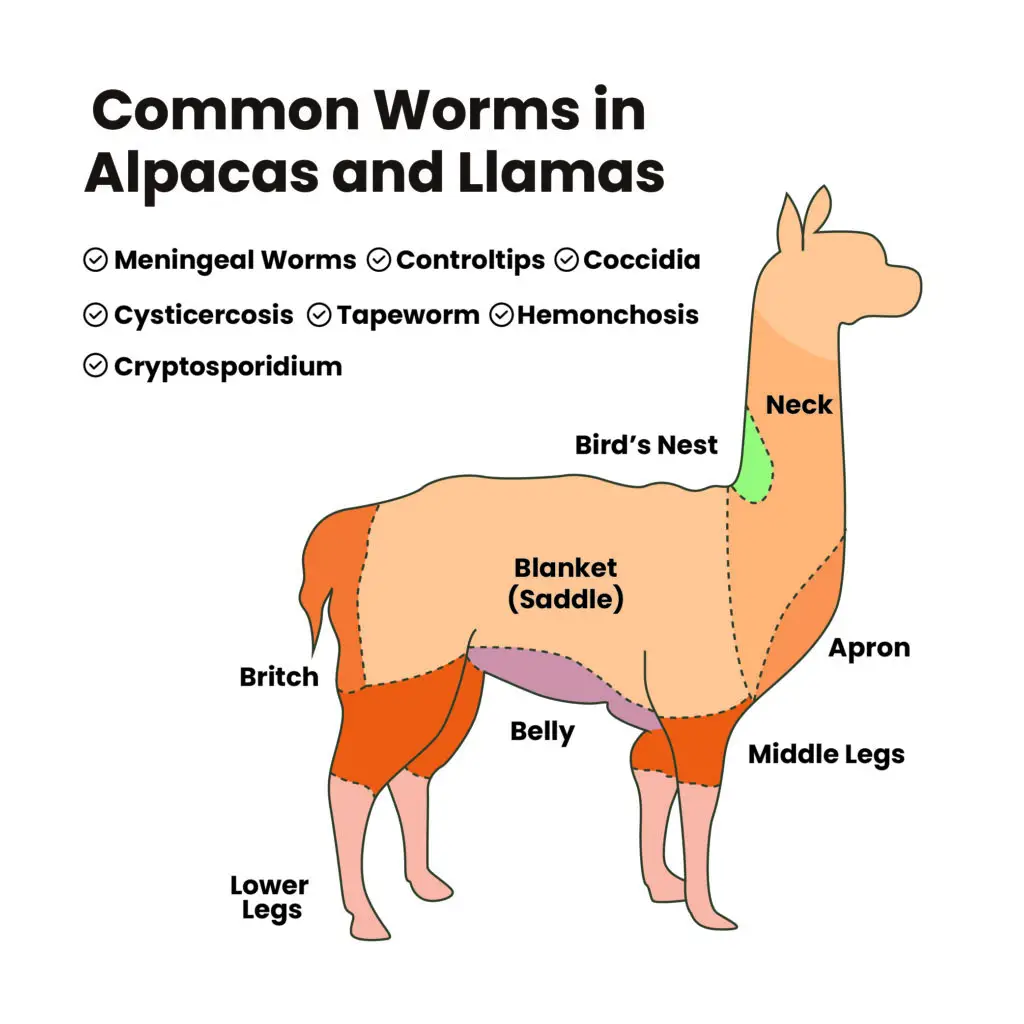
Why would an Alpaca Suddenly Die?
Sudden death in alpacas is associated with cardiovascular disease or due to colic. Needs so careful observation
What Causes Anemia in Alpacas?
Mycoplasma haemolamae is a bacteria that infect the red blood cells of alpacas and other camelids, causing them to become anemic and causing them to die. Iron and phosphorus deficiency are two more factors that contribute to anemia.
What Diseases do Alpacas get?
Listeriosis, encephalitis, polioencephalomalacia, West Nile disease, equine herpes virus, and meningeal worm are among the illnesses that can harm alpacas. According to the literature, camelids tend to be more prone to cervical luxations and subluxations than other species.
What is Poisonous to Alpacas?
Many plants and vegetables are poisonous to alpacas which include the following:
- Bracken, the cumulative effect
- Ivy, particularly berries
- Elderberry – cyanogenic plant
- Privet, particularly flowers and berries
- Hydrangea
- Horsetail
- Laburnum, deadly
- Ragwort, cumulative effect
- Laurel
- Foxglove
- Yew, deadly
- Buttercup
- Maples – all Acer family
- Rhododendron and Azalea, deadly
- Oak leaves and acorns in high quantities
- Horse Chestnut – all parts, bark, flowers, leaves, and conkers
- Hemlock, deadly
- Arum lilies – Lily of the Valley
- Cherry
- Box
- Oil Seed Rape Brassica family – suspect
- Hypericum (St John Wort),
- Aconite
- Iris
- Heliotrope,
- Lilac,
- Larkspur
- Variegated Thistle
- Delphinium
- Lantana
- Rhubarb
- Lupin
- Flowering bulbs, e.g., daffodils, snowdrops
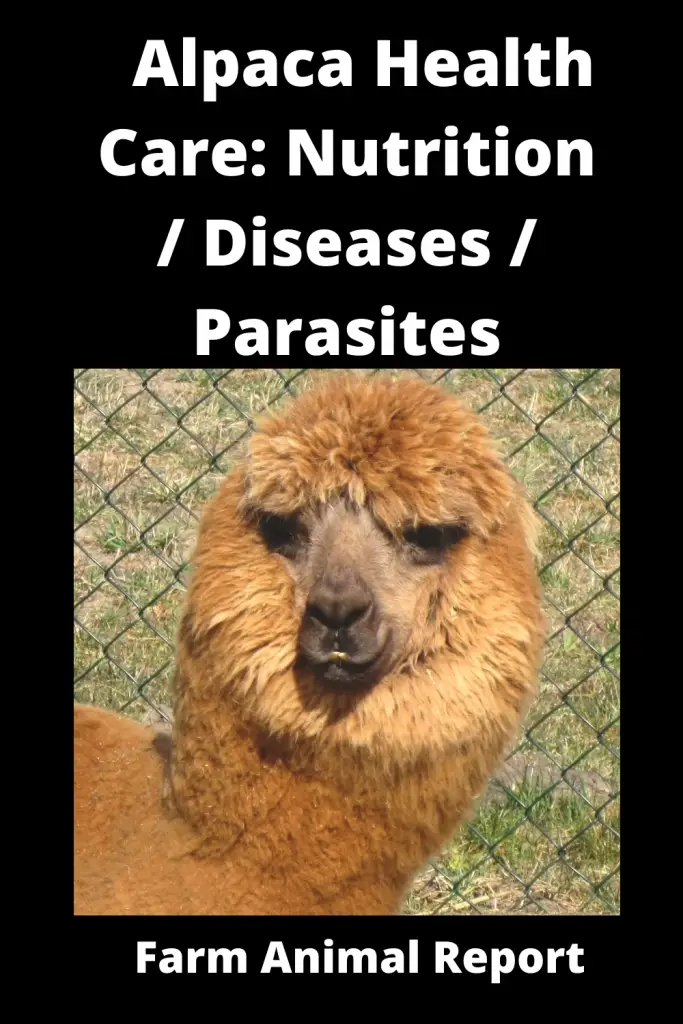
Do Alpacas carry Diseases?
Yes, they can carry many diseases and transfer them to other livestock. For example, they carry FMD (Foot and Mouth) Virus and spread it to ruminants.
Learn More – 18 Ways to Make Money Alpaca Farming
What causes Diarrhea in Alpacas?
Alpacas as young as two months of age have been observed to suffer from diarrhea caused by E. coli and Nematode parasites.
Young animals are particularly vulnerable to parasitism because they have not yet developed any acquired resistance to parasites.
More Research – Follow Links – Check With Your Local Vet
| Health Problem | Symptoms | Treatment | Prevention | Contact Vet By Zip Code |
| Brucellosis | Spontaneous Abortions, Retained Placentas Intermittent fevers, stiff swollen Joints | Most Places require slaughter | Brucellosis Vaccine Consult Your Vet | Contact Local Vet for recommendations |
| Caseous Lymphadenitis, CL, Cheesy Gland | Internal abscesses, lack of vitality, | Quarantine, abscess drained, and cleaned by Vet. Caution CL is transmissable to Humans Antimicrobial treatment (intralesional and/or systemic) | Elimination of diseased animals from the herd/flock Vaccination | Contact Local Vet for recommendations |
| E-Mac Parasite – Coccidian | Lethargy, Depression, weight loss, diarrhea comes and goes | Deworming has no effect – commonly treated with sulfa drugs and amprolium | Weekly Manure pickup, Don’t feed Llamas off the ground | Contact Local Vet for recommendations |
| Enterotoxemia, Overeating Disease, pulpy Kidney | Bloating, standing like a rocking horse, teeth grinding, seizures, foaming at the mouth, eventual death, Loss of appetite Abdominal discomfort Profuse and/or watery diarrhea that may be bloody | death usually happens quickly | Vaccine / CD T Toxid, Tetnas, Covenxin 8 | Contact Local Vet for recommendations |
| Heat Stress, Major Killers in Alpacas and Llamas | Panting, Depression, Not eating, 104F fever, heart rate faster than 90 Beats per minute | Cool Llama down, soak animal, shade, swimming pool, Contact Your Vet | Shear Alpaca in spring. shade, cool barn, | Contact Local Vet for recommendations |
| Facial Swellings, abscesses, bone infections, teeth root abscesses, splinters | Not eating, visible swellings | Find the cause of infection | Contact Local Vet for recommendations | |
| Johnes Disease | Contagious, progressively fatal | Develop approved herd-management plans; | Contact Local Vet for recommendations | |
| Listeriosis – Inflammation of Brain – Circling Disease | Disorientation, Depression, Circling, Staggering, Drooling | See Veterinarian Administration of parenteral procaine penicillin G or oxytetracycline | Moldy Hay, feed | Contact Local Vet for recommendations |
| Mycoplasm – Bacterium – | Anemia, Weight Loss, Lethargy | Oxytetracycline Macrolide antibiotics Sometimes fluoroquinolones or tetracyclines | Insect Control | Contact Local Vet for recommendations |
| PEM Polioencphalomalacia | Disorientation, depression, stargazing, weaving, circling, diarrhea | early thiamine injections Treatment of PEM is symptomatic and includes administration of thiamine Dexamethasone may help reduce cerebral edema | Vitamin B1, thiamine | Contact Local Vet for recommendations |
| Stomach Ulcers, common and can be fatal | Teeth Grinding, kicking at belly, kushing in abnormal positions, rolling, black stool | Contact Vet for recommendations | Correct Feed Treatment of PEM is symptomatic and includes administration of thiamine Dexamethasone may help reduce cerebral edema | Contact Local Vet for recommendations |
| Tetnas , puncture wounds, scrapes | Bloat, rocking horse stance, drooling, lockjaw, ear rigidity, same with tail – result in death | Contact Local Vet for recommendations | Vaccinations | Contact Local Vet for recommendations |
| Urinary Tract Stones, Urinary Calculi, salt Crystals, UC, | Anxiety, restlessness, teeth grinding, urine dribbling, evidence of pain in urination | Immediate Medical services – surgical removal – will not self-correct | Balanced Diet Vet Directed BoSe Shots | Contact Local Vet for recommendations |
| White Muscle Disease – Nutritional Muscle Disease | Stillborn, crias weakness Adults infertility, infertility, retained placenta, lethargy | BoSe Shots, Selenium, Vitamin D | Balanced Diet, Feed, and Minerals | Contact Local Vet for recommendations |
Final Thoughts
In addition to the general practice suggestions, it is possible that region-specific conditions exist, necessitating the implementation of additional or different procedures in specific locations to maintain Alpacas’ health and well-being. A camelid-experienced veterinarian should be consulted for any local or regional requirements where one is available. Additionally, consider becoming a member of one or more alpaca groups to continue education, networking, and owner support in your area.


